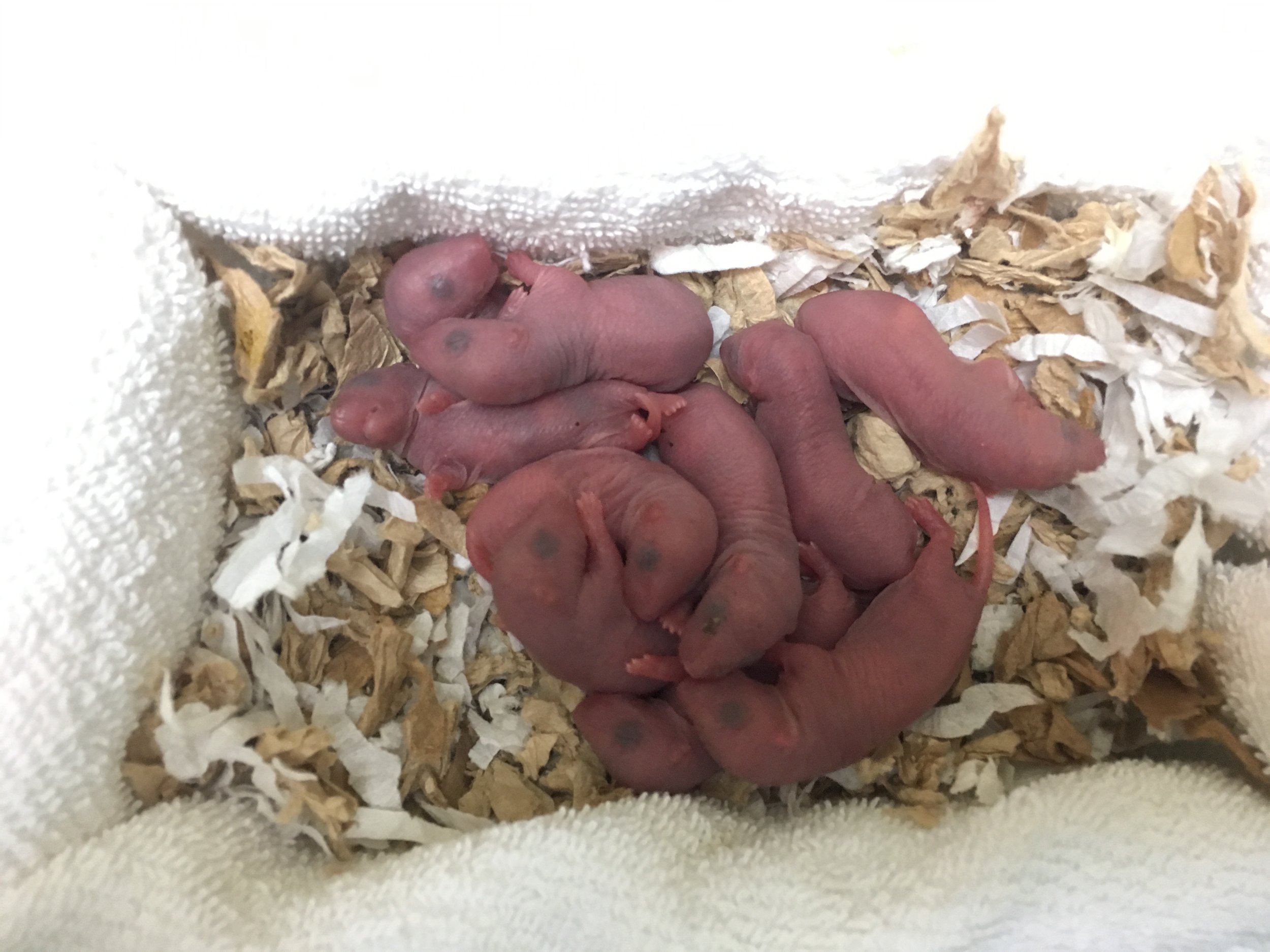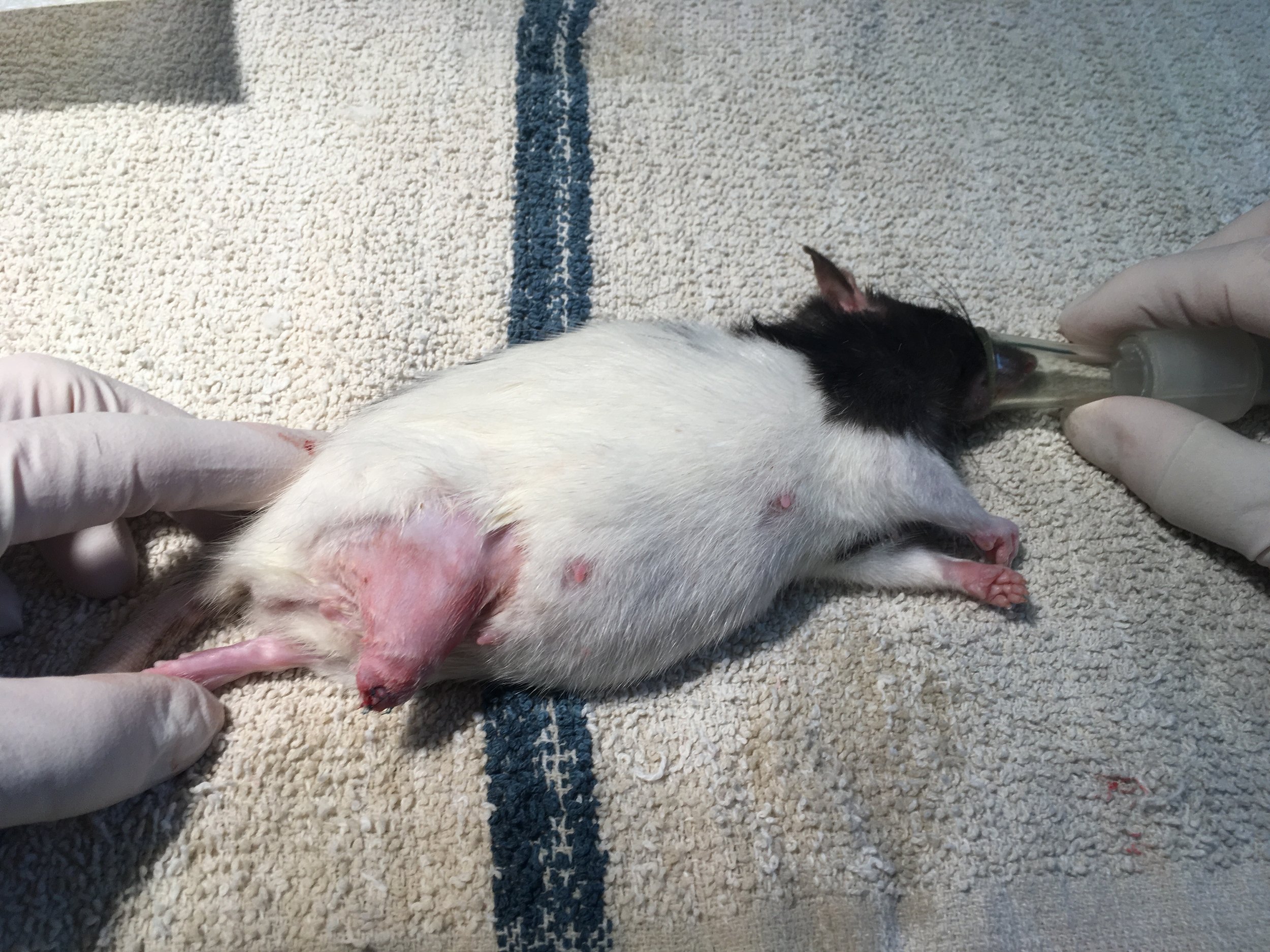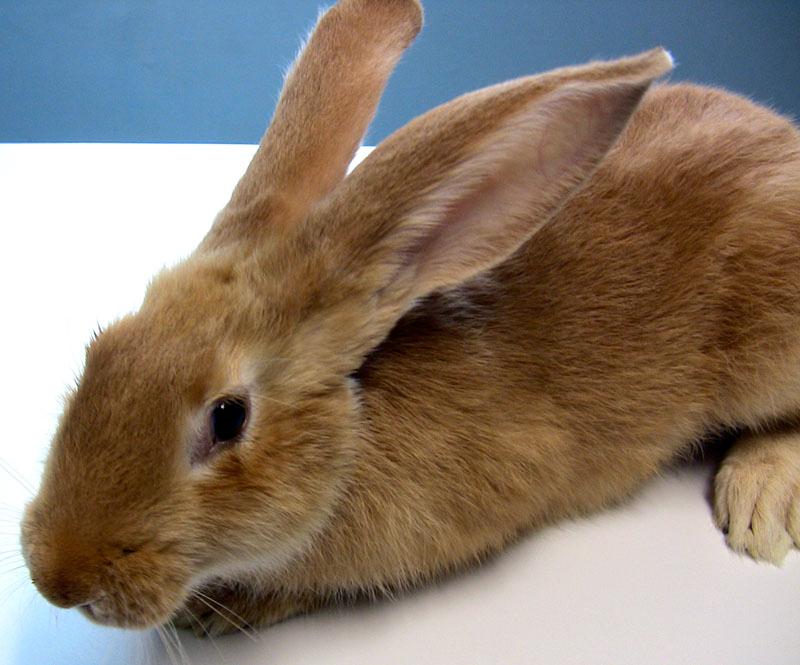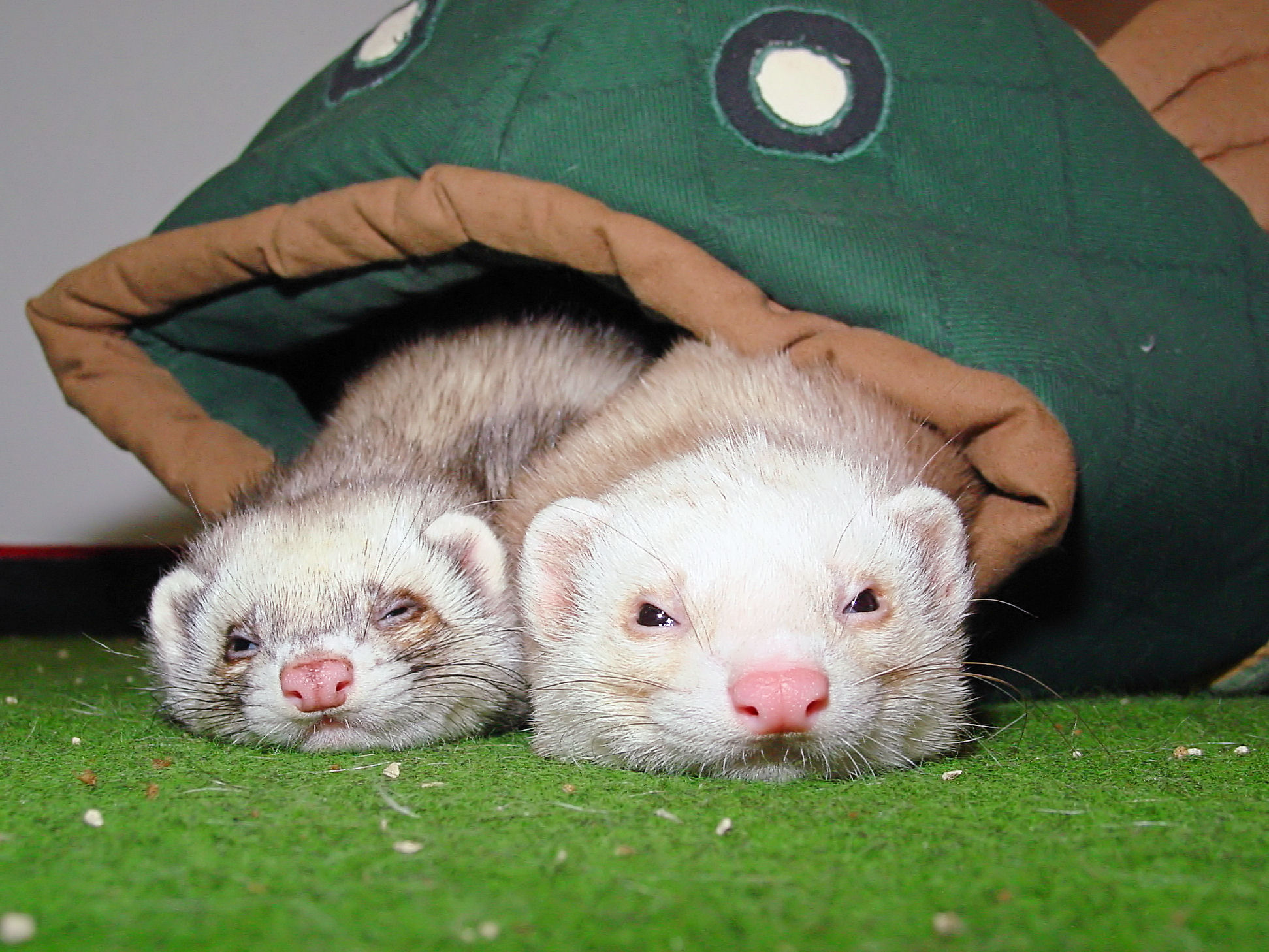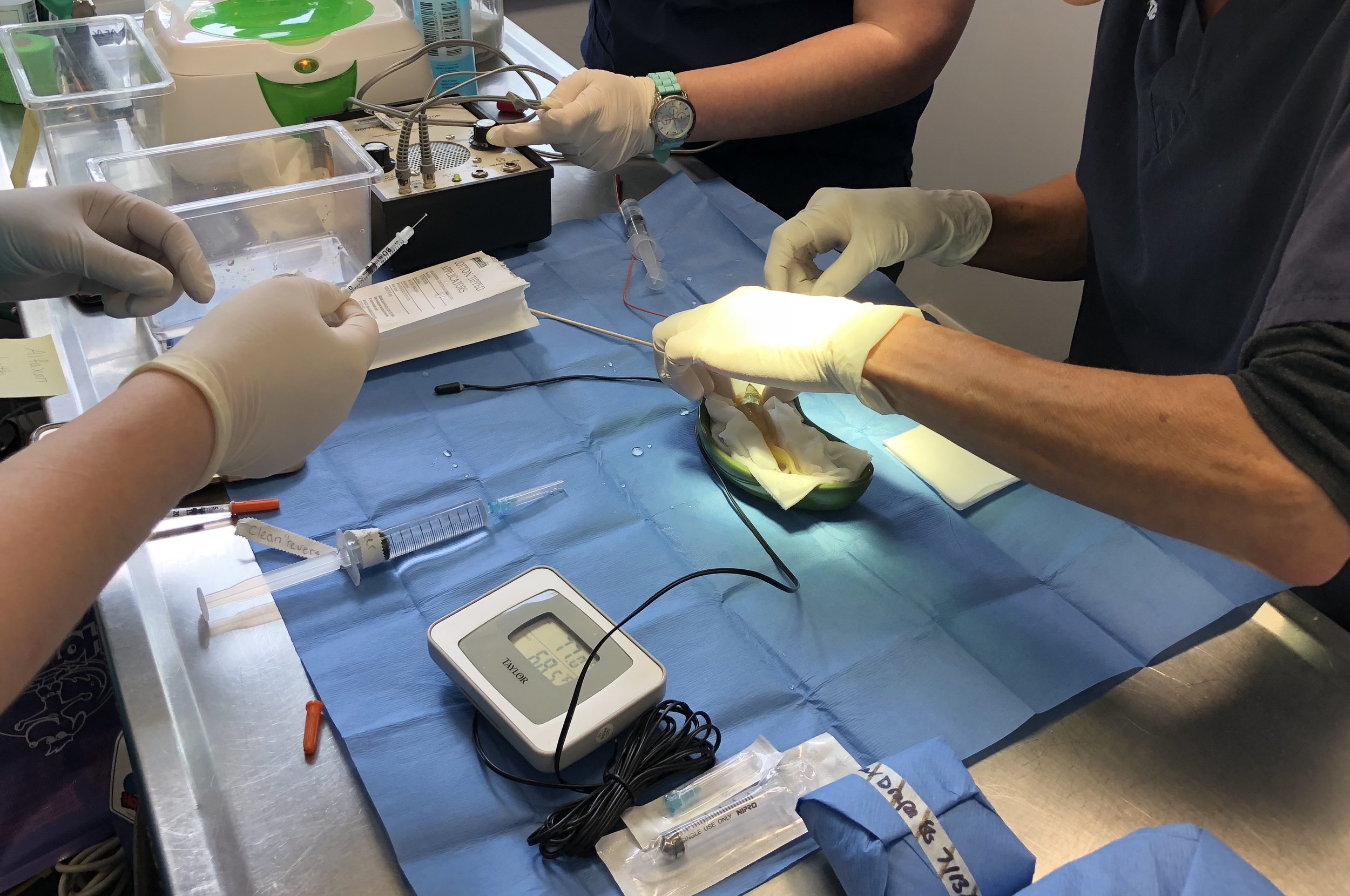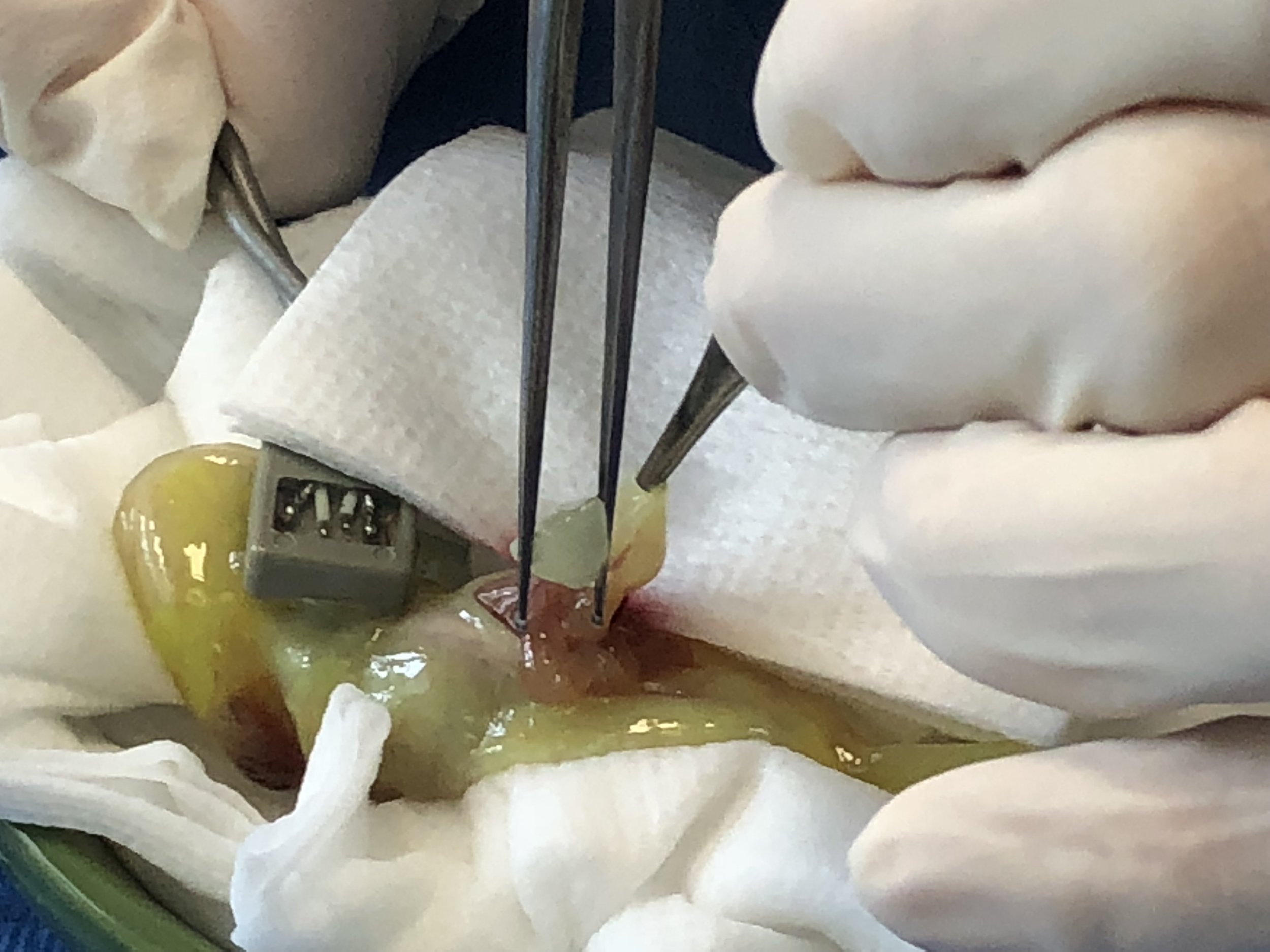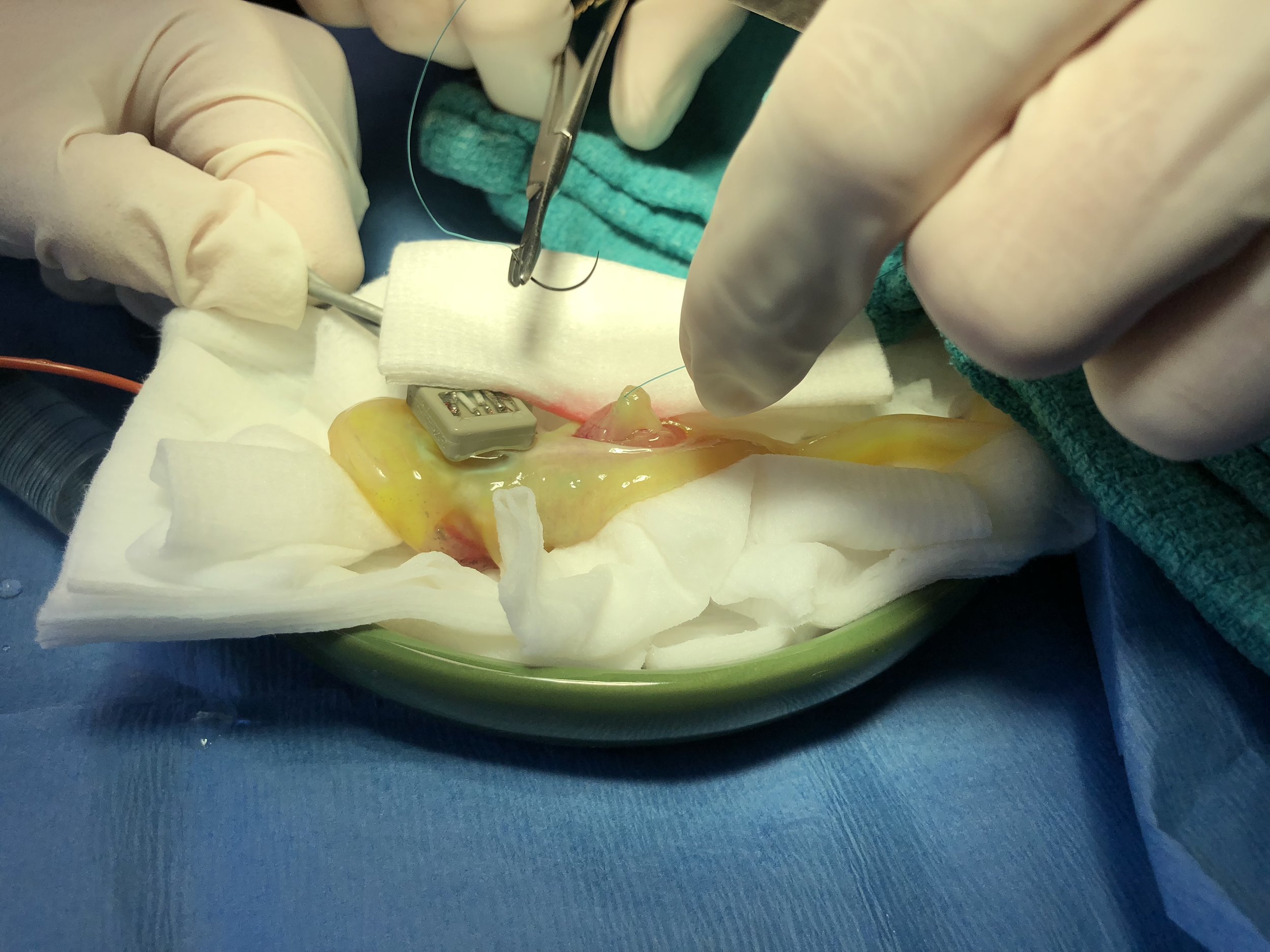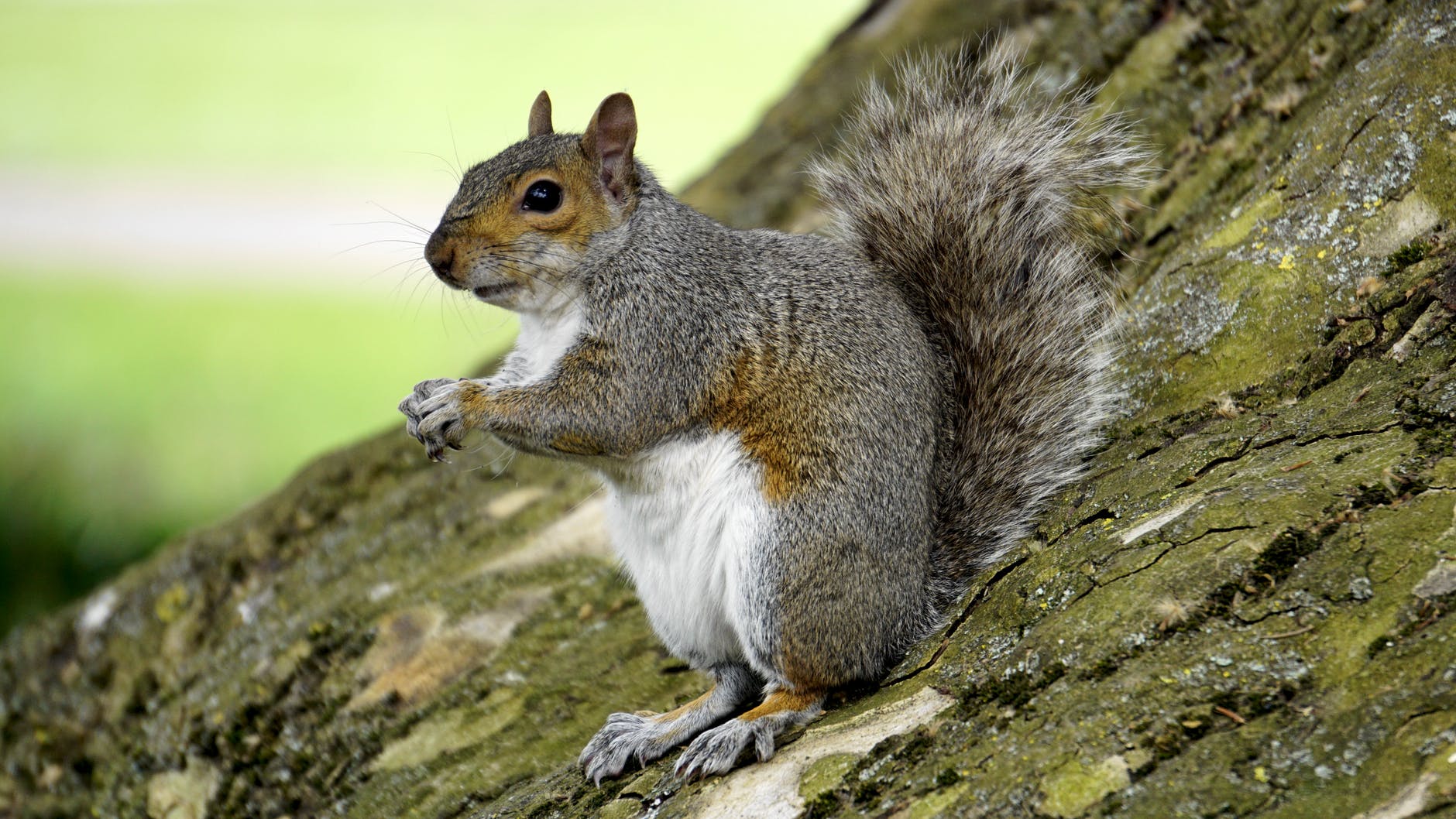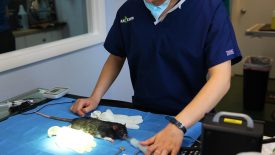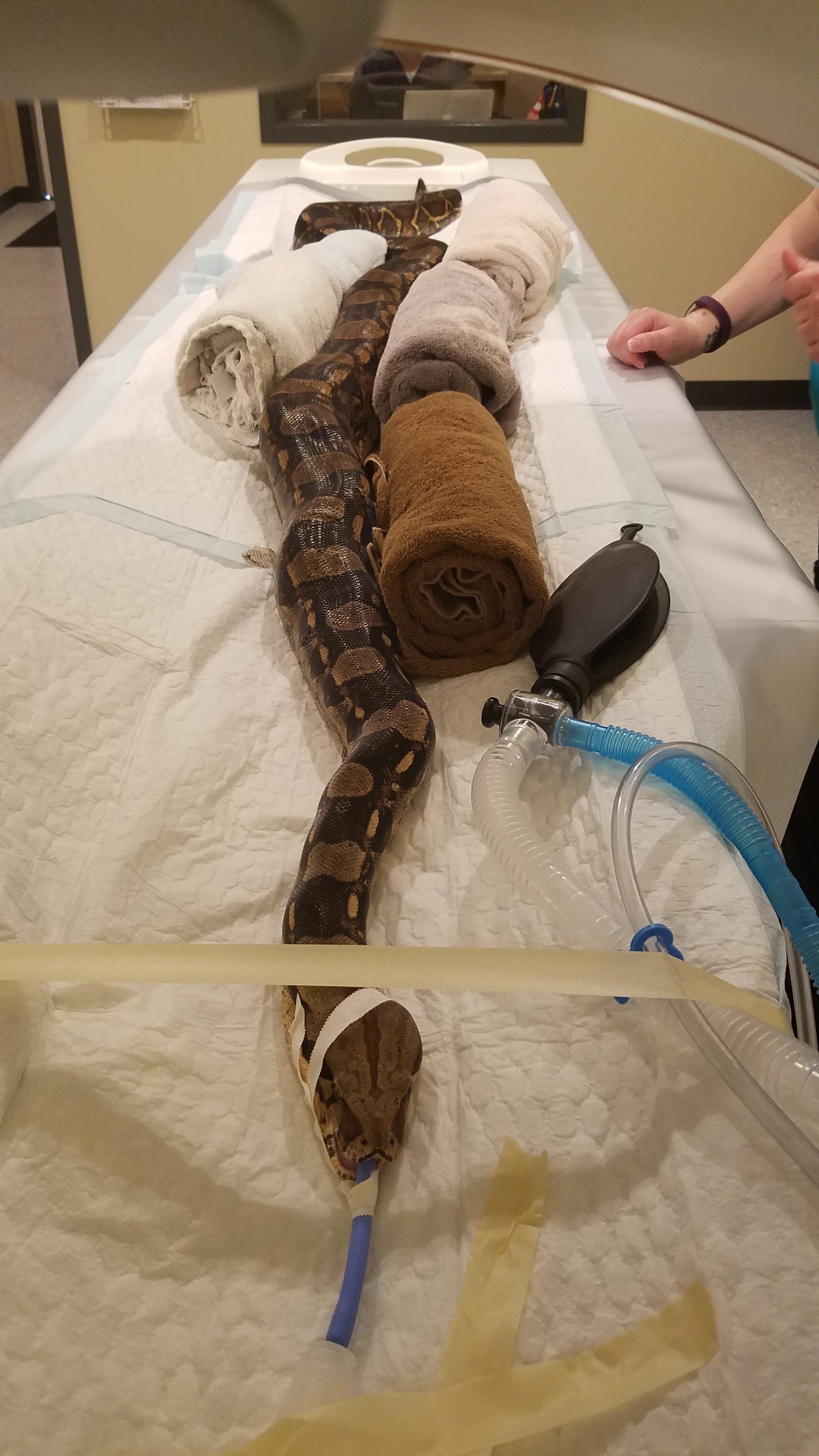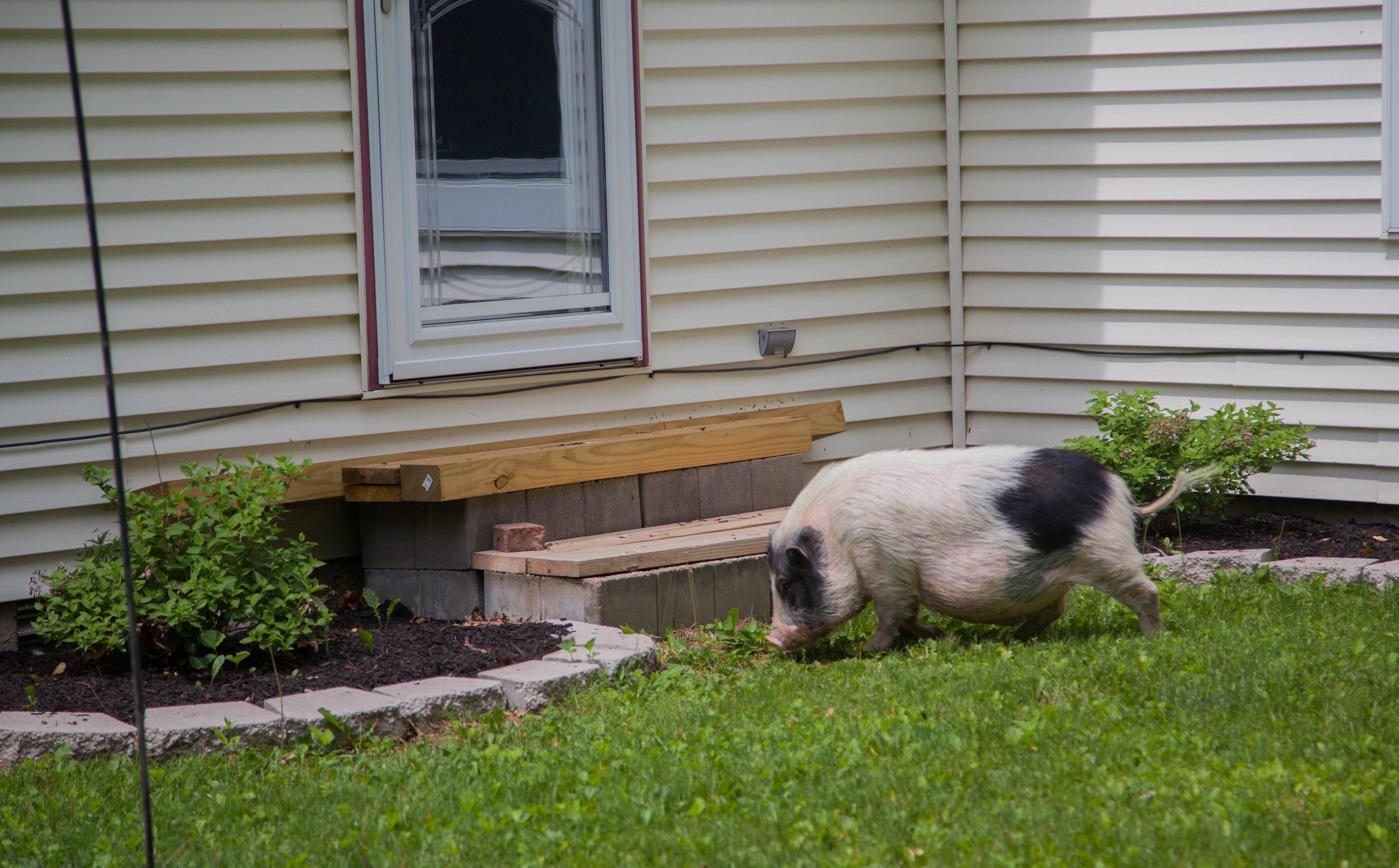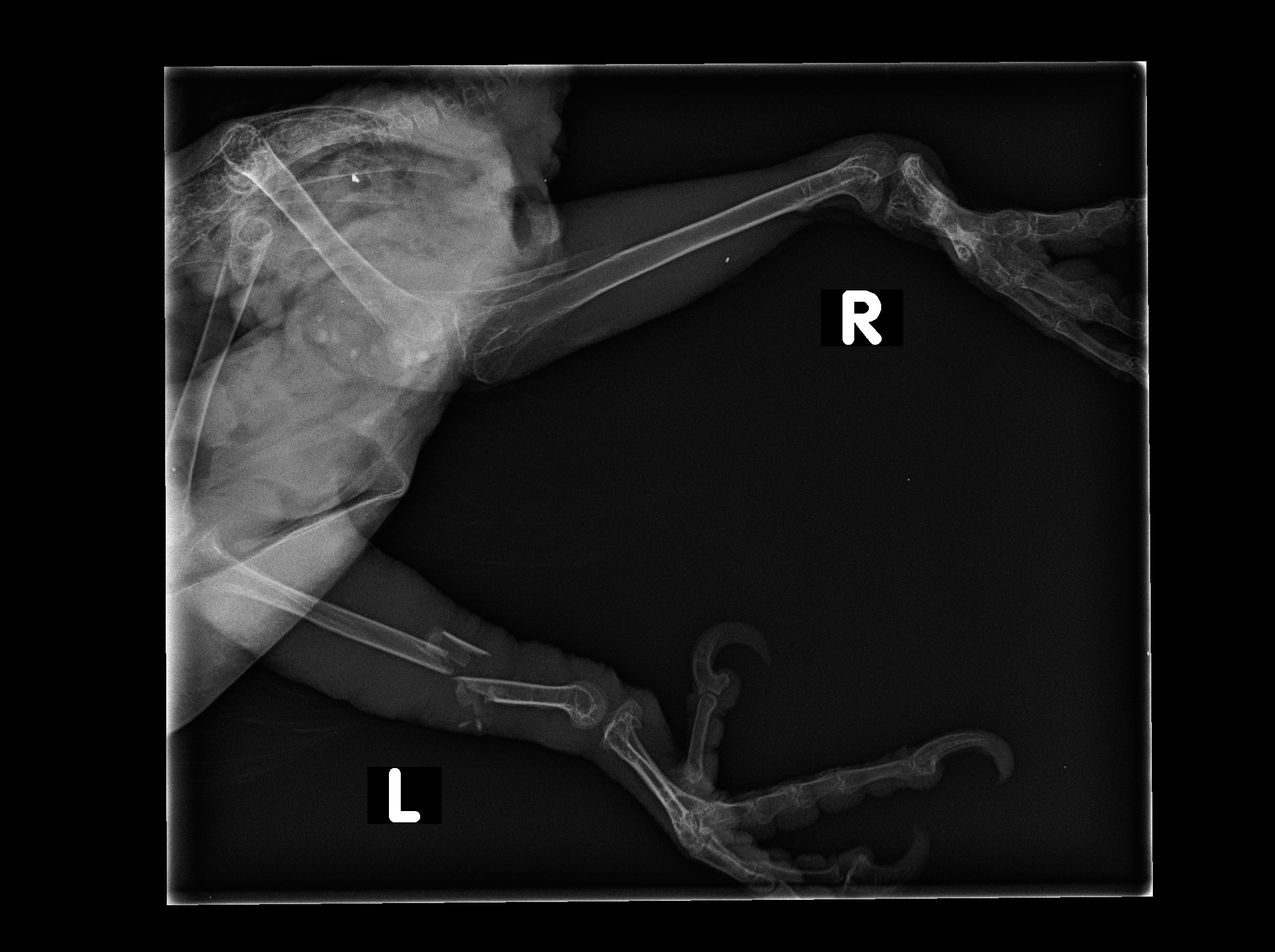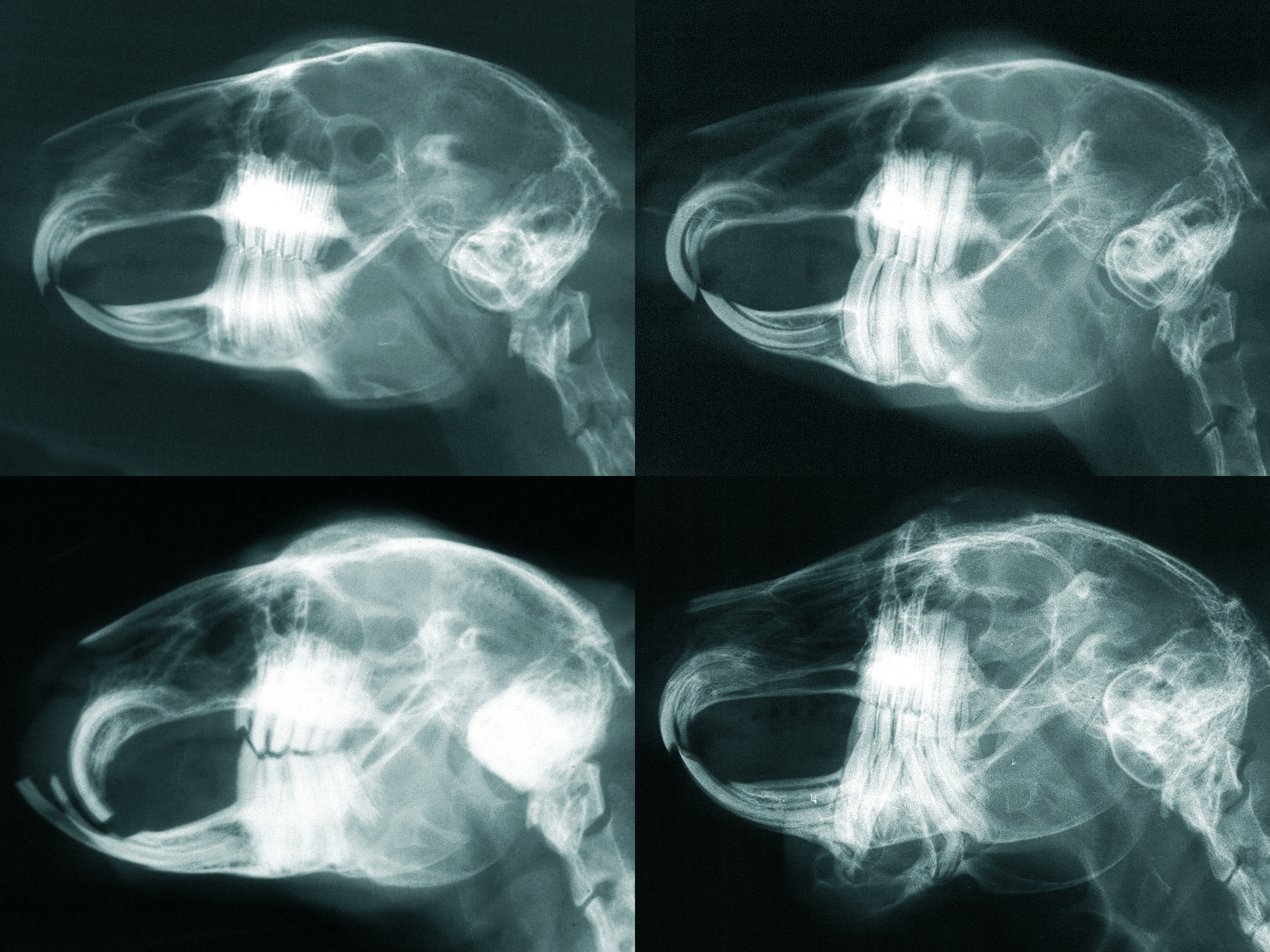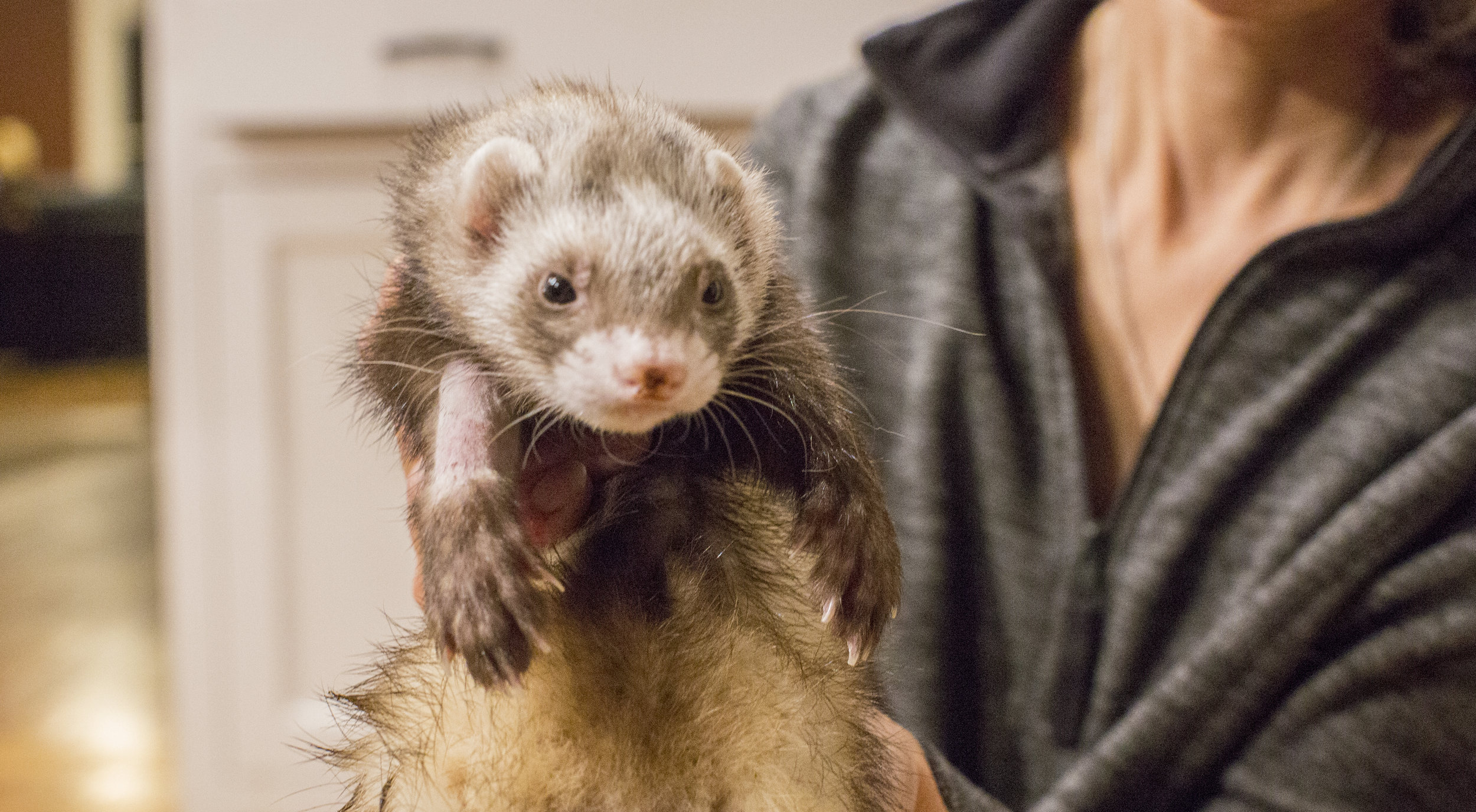Should I consider essential oils for my exotic pets?
 Essential oils are marketed for both humans and pets, in particular dogs and cats. In particular, some products are touted as natural alternatives to synthetic tick and flea medications. There are actually some scientific studies on the use of these products in pets, and some new studies coming out on the use of essential oils for mites in chickens. In some cases, carefully dosing of particular essential oils appeared to kill some parasites but these were tested on mites in a laboratory, and not actually applied to the hens. For now, a proven safe, effective dose is unknown, despite internet recommendations based on trial and error.
On the other hand, emergency veterinarians are seeing increasing numbers of pets injured or even killed by essential oils. (See: https://www.ncbi.nlm.nih.gov/pubmed/22805458)
Essential oils are marketed for both humans and pets, in particular dogs and cats. In particular, some products are touted as natural alternatives to synthetic tick and flea medications. There are actually some scientific studies on the use of these products in pets, and some new studies coming out on the use of essential oils for mites in chickens. In some cases, carefully dosing of particular essential oils appeared to kill some parasites but these were tested on mites in a laboratory, and not actually applied to the hens. For now, a proven safe, effective dose is unknown, despite internet recommendations based on trial and error.
On the other hand, emergency veterinarians are seeing increasing numbers of pets injured or even killed by essential oils. (See: https://www.ncbi.nlm.nih.gov/pubmed/22805458)
In this report, 3 of 44 animals died; side effects included mostly hypersalivation and agitation in cats and lethargy and vomiting in dogs.
This is despite the fact that oils are “natural” products. Even natural products can be toxic, especially at higher dosages.
If essential oils interest you, research as carefully as possible, and ask advice from a veterinarian with experience in their use. If there is no scientific evidence on safety and efficacy, we really can’t recommend their use.
We are keeping a close watch on the latest research, and will share what we learn!
Getting ready for the Holidays at Avian and Exotic Animal Clinic!
 It’s the most wonderful time of the year!
We will be closed for the Thanksgiving holiday, November 22 and 23 (not that Black Friday is really a holiday!). We will reopen on Saturday the 24th.
It’s the most wonderful time of the year!
We will be closed for the Thanksgiving holiday, November 22 and 23 (not that Black Friday is really a holiday!). We will reopen on Saturday the 24th.
Speaking of Black Friday, need Christmas gift ideas for your exotic pet? Come and see what fun toys and treats are available, courtesy of our many wonderful rescues. All proceeds benefit great organizations, like EARPS and the Indiana House Rabbit Association.
Speaking of Christmas, we close at 1 PM on Christmas eve, then reopen Thursday, December 27th.
Check the website for instructions on how to contact us in case of an emergency with your exotic pet during the holidays. Go to: http://www.exoticvetclinic.com; see the Quick Link: Emergency Care link on the right side.
Hello from the lobby of the beautiful new Oxbow Animal Health facility in Nebraska!
 Dr. Lennox got the chance to see behind the scenes where hay is carefully sifted and packed, and ideas for new products are developed. One thing we learned was that Oxbow regularly contributes products and funds to deserving exotic mammal rescues and foster networks. If you know a rescue that could benefit from Oxbow's support, applications for 2019 will be available early next year.
Dr. Lennox got the chance to see behind the scenes where hay is carefully sifted and packed, and ideas for new products are developed. One thing we learned was that Oxbow regularly contributes products and funds to deserving exotic mammal rescues and foster networks. If you know a rescue that could benefit from Oxbow's support, applications for 2019 will be available early next year.
Go here to learn more - http://www.oxbowanimalhealth.com/the-oxbow-way/appreciation/annual-rescue-grants/
.
With the holidays approaching, don't forget about our local central Indiana rescues! Contact us, and we will connect you!
Highlights from ExoticsCon 2018
 The largest all exotics conference of the year is ExoticsCon, where avian, reptile and mammal veterinarians from all over the world come together to share and learn. Dr. Lewis spent several days there in Atlanta and brought back a lot of great information on new diagnostic tests, treatments, and procedures.
The largest all exotics conference of the year is ExoticsCon, where avian, reptile and mammal veterinarians from all over the world come together to share and learn. Dr. Lewis spent several days there in Atlanta and brought back a lot of great information on new diagnostic tests, treatments, and procedures.From Trash to Treasure: One Beautiful Bird’s Story
From Meg, EARPS volunteer:
 On Saturday, August 18, a good Samaritan reached out to EARPS. They had heard a noise in the dumpster by their apartment, and upon investigating, found a bird chewing its way out of a box. When they got the box out of the dumpster and opened it, the bird inside was wrapped in a cloth and was dirty and smelled bad. The good Samaritan called around until someone referred them to EARPS, as no one was quite sure what to do with this bird!
On Saturday, August 18, a good Samaritan reached out to EARPS. They had heard a noise in the dumpster by their apartment, and upon investigating, found a bird chewing its way out of a box. When they got the box out of the dumpster and opened it, the bird inside was wrapped in a cloth and was dirty and smelled bad. The good Samaritan called around until someone referred them to EARPS, as no one was quite sure what to do with this bird!
The finders told EARPS that she had "upper respiratory symptoms and her beak was overgrown, and she has poop stuck to her butt" and so EARPS decided to take her into rescue as an emergency. But then when EARPS picked up the bird, that wasn't the case. She had a very visible prolapse and was caked in feces and urates on her bottom half. The finders, although very kind, had no knowledge about birds and weren't aware of how severe this condition could have been.
 When EARPS brought her home to a temporary foster, she ate every single thing handed to her - vegetables, fruits, pellets, seeds. human junk food! She ate for nearly 24 hours straight, even eating while they covered her cage up for the night. EARPS took her to AEAC first thing Monday morning.
When EARPS brought her home to a temporary foster, she ate every single thing handed to her - vegetables, fruits, pellets, seeds. human junk food! She ate for nearly 24 hours straight, even eating while they covered her cage up for the night. EARPS took her to AEAC first thing Monday morning.
Our bird is doing very well now! We found she is a mature female, with some evidence of reproductive disease, and we are taking steps to get her well and ready for a permanent home.
Meet our newest staff members!
Our newest technician is Amanda Long.
 Amanda graduated in May 2018 from Macomb Community College's Veterinary Technician Program in Macomb, Michigan. She has been working in veterinary practice for 3.5 years total, with 1 year in exotic medicine. She has two crazy dogs, a border collie named Cisco and a chow chow mix named Koda. In her free time, she enjoys hiking and kayaking.
Amanda graduated in May 2018 from Macomb Community College's Veterinary Technician Program in Macomb, Michigan. She has been working in veterinary practice for 3.5 years total, with 1 year in exotic medicine. She has two crazy dogs, a border collie named Cisco and a chow chow mix named Koda. In her free time, she enjoys hiking and kayaking.
.
.
.
Our newest Client Care Team member is Vanessa Shockley.
You may not see Vanessa, but you might hear her voice, helping our clients on the phone.
 Hi! My name is Vanessa. I am 51 years young and a proud mom of two girls and grandma of three grandchildren. I have 20 years of customer service, and I just love work here at the Avian & Exotic Animal Clinic. My motto - Keep pushing forward, as God is in control. Peace, love, and happiness!
Hi! My name is Vanessa. I am 51 years young and a proud mom of two girls and grandma of three grandchildren. I have 20 years of customer service, and I just love work here at the Avian & Exotic Animal Clinic. My motto - Keep pushing forward, as God is in control. Peace, love, and happiness!
.
.
Our newest Boarding Assistant is Sadah Robinson.
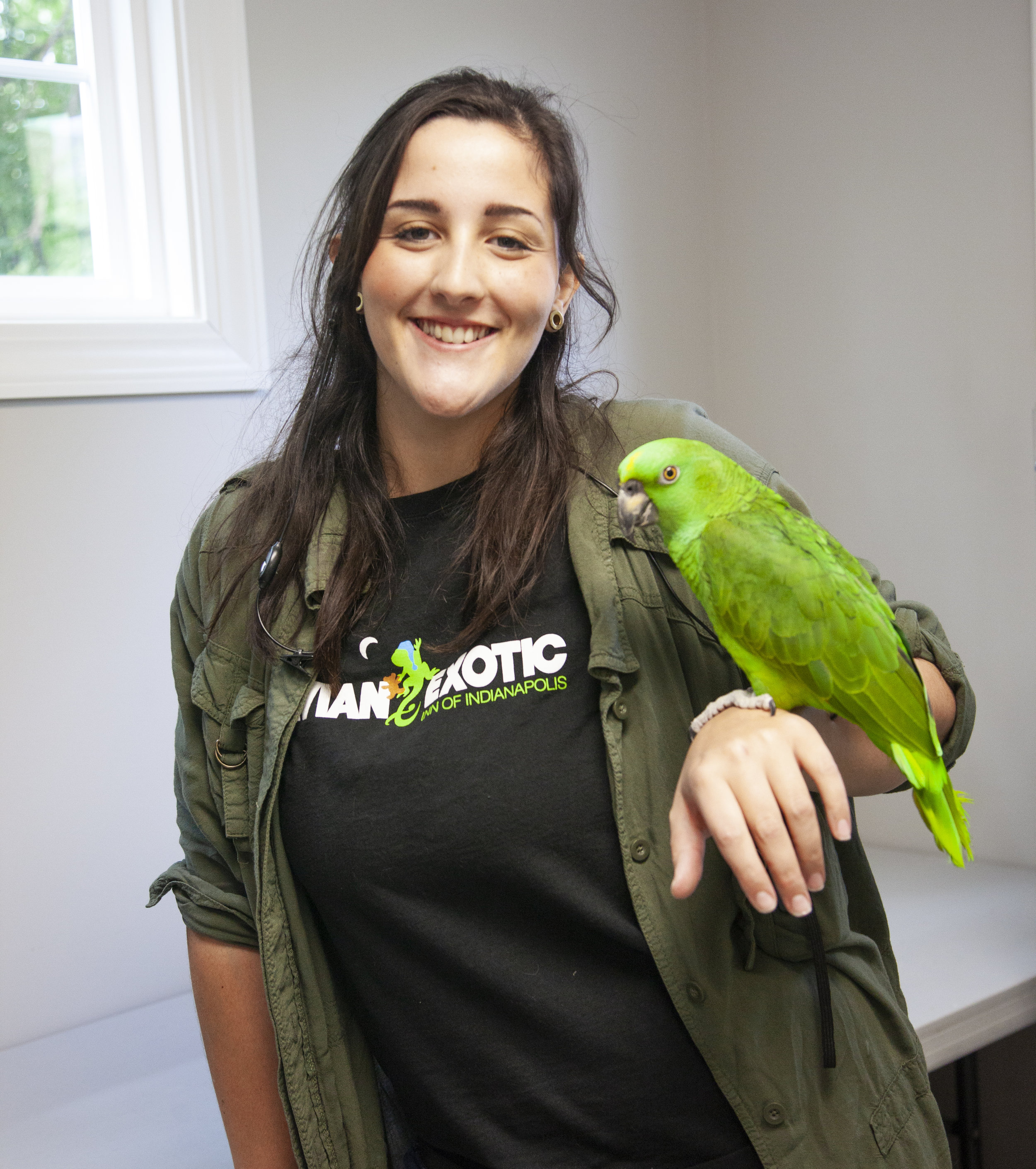 Sadah has always been a wildlife warrior. Hoping to one day travel the world in the name of conservation and the greater good of the environment, she takes the time to learn about both domestic and wild animals. Sadah is currently enrolled in college classes at Ivy Tech Indianapolis and is the oldest in a house of 3 other siblings. Her hope is to one day use her studies and talents to open an animal sanctuary to enlighten children both the wonders and dangers of certain animals. You can usually find Sadah in the woods camping, playing her guitar!
Sadah has always been a wildlife warrior. Hoping to one day travel the world in the name of conservation and the greater good of the environment, she takes the time to learn about both domestic and wild animals. Sadah is currently enrolled in college classes at Ivy Tech Indianapolis and is the oldest in a house of 3 other siblings. Her hope is to one day use her studies and talents to open an animal sanctuary to enlighten children both the wonders and dangers of certain animals. You can usually find Sadah in the woods camping, playing her guitar!
.
.
Our newest Technician Assistant is Brianna Manns.
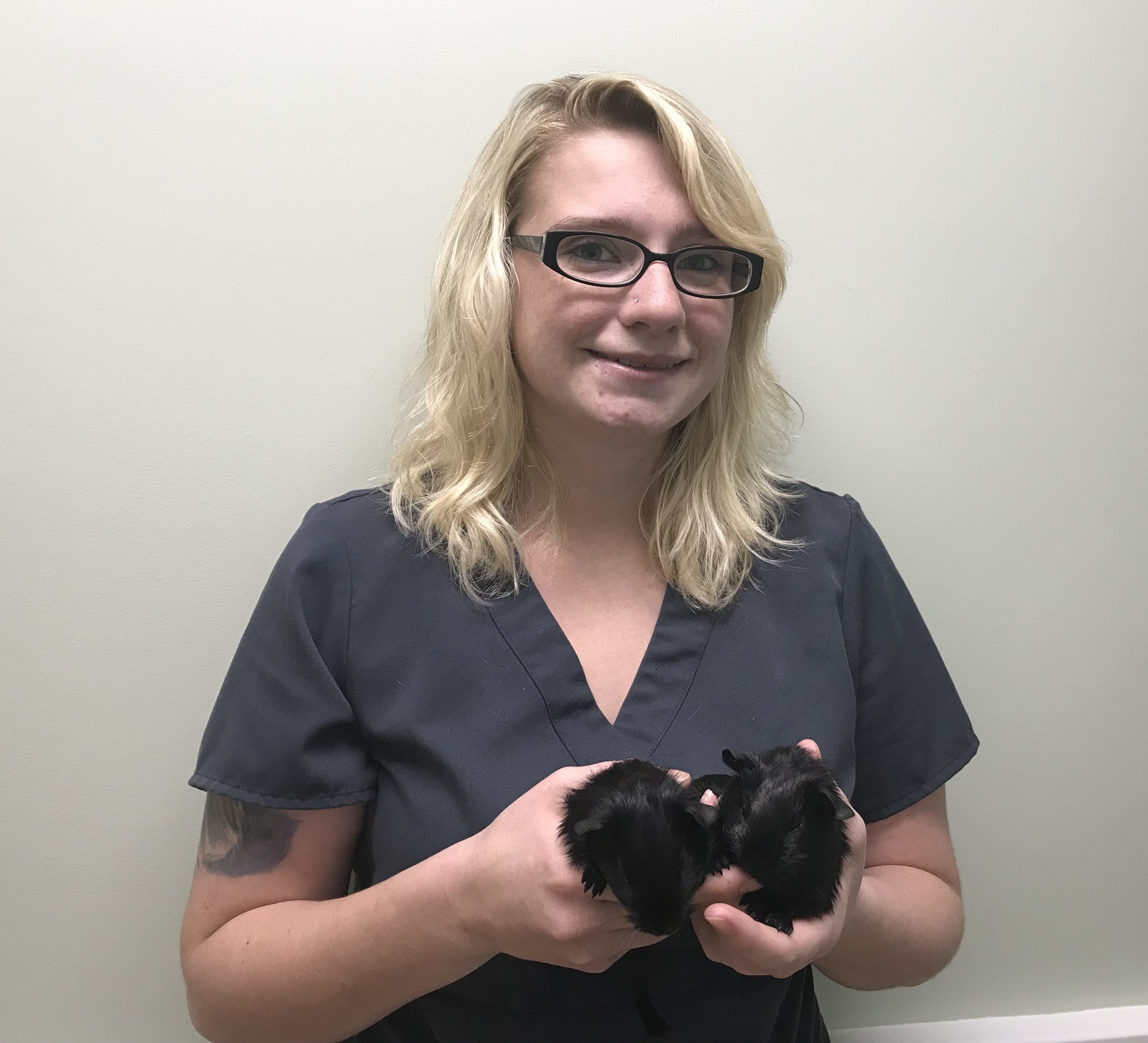 After completing her externship with us, Brianna graduated from the Vet Tech Institute in August of 2018 and promptly joined our team! She enjoys the variety of species seen here at the clinic and has a particular fondness for reptiles, birds and wildlife. At home, Brianna has a chihuahua named Tater Tot, two cats Jesse and Leo, a leopard gecko named Rin, a blue-tongued skink named Ryuuk, and a beardie named Kota. In her spare time, Brianna enjoys reading and walking nature trails.
After completing her externship with us, Brianna graduated from the Vet Tech Institute in August of 2018 and promptly joined our team! She enjoys the variety of species seen here at the clinic and has a particular fondness for reptiles, birds and wildlife. At home, Brianna has a chihuahua named Tater Tot, two cats Jesse and Leo, a leopard gecko named Rin, a blue-tongued skink named Ryuuk, and a beardie named Kota. In her spare time, Brianna enjoys reading and walking nature trails.
A visit to an exotic veterinary practice in Paris
 In August Dr. Lennox traveled to the annual meeting of the European College of Zoological Medicine (www.eczm.eu) in Athens, Greece; on the way she stopped to visit a colleague’s veterinary clinic in Paris. Dr. JF Quinton was gracious enough to give a tour of the beautiful new veterinary facility - www.advetia.fr. Dr. Quinton runs the exotics section of the hospital. The clinic is very large, beautiful and impressive.
And what kinds of patients does Dr. Quinton see on a daily basis? In the clinic were a handful of rabbits, a turtle, and this lovely little pet chicken! It was good to learn that pet chickens are becoming more and more popular all over the world!
In August Dr. Lennox traveled to the annual meeting of the European College of Zoological Medicine (www.eczm.eu) in Athens, Greece; on the way she stopped to visit a colleague’s veterinary clinic in Paris. Dr. JF Quinton was gracious enough to give a tour of the beautiful new veterinary facility - www.advetia.fr. Dr. Quinton runs the exotics section of the hospital. The clinic is very large, beautiful and impressive.
And what kinds of patients does Dr. Quinton see on a daily basis? In the clinic were a handful of rabbits, a turtle, and this lovely little pet chicken! It was good to learn that pet chickens are becoming more and more popular all over the world!
World Rabies Awareness Day is September 28th!
While human deaths from rabies are rare in the US and much of the developed world, it’s still a huge problem in developing countries, with children the primary victims.Vaccination of pets (dogs, cats and FERRETS) is a huge contributor to rabies management. Learn more here at http://www.who.int/rabies/WRD_landing_page/en/
Vaccination of ferrets for rabies is required in Indiana, and much of the US. There is a single approved rabies vaccine for ferrets-call us if you need more information.
Can you name some of the most famous rabies victims in literature and the movies? See how many of these you remember:
“Old Yeller”, in the 1957 Disney movie of the same name “Mad Dog” in the famous book/movie “ To Kill a Mockingbird” “Cujo” in Stephen King’s 1981 book/movie of the same name Elaine, a popular character in the TV series “Seinfeld” season 5 episode 3 (she doesn’t really have it!)
For more, go to this link on rabies in popular culture: en.wikipedia.org/wiki/Rabies_in_popular_culture
Congratulations to Jack Bennet
 AEAC is proud to announce the certification of another of our Avian and Exotic Animal Clinic family; after graduating and now passing his licensing test, Jack is officially a registered veterinary technician. This brings the number of our registered veterinary technicians to 7.
If you aren’t familiar with the term, registered veterinary technicians are skilled professionals who work alongside veterinarians playing an important nursing role. In fact, there is a national effort to change their title from veterinary technician to veterinary nurse, as this more accurately describes their role within the veterinary clinic.
AEAC is proud to announce the certification of another of our Avian and Exotic Animal Clinic family; after graduating and now passing his licensing test, Jack is officially a registered veterinary technician. This brings the number of our registered veterinary technicians to 7.
If you aren’t familiar with the term, registered veterinary technicians are skilled professionals who work alongside veterinarians playing an important nursing role. In fact, there is a national effort to change their title from veterinary technician to veterinary nurse, as this more accurately describes their role within the veterinary clinic.
Congratulate Jack the next time you see him - it will be easy to pick him out! (See our staff page!)
A story of an unusual patient with what is actually a very common problem!
This month we saw a cute little patient, an axolotl (Mexican salamander) named Axolotl! To see pictures of other axolotls and learn more about them, see this Wikipedia entry: https://en.wikipedia.org/wiki/Axolot
Unlike other amphibians, the axolotl starts out like a tadpole, and never trade their gills for lungs; instead they live their entire lives in the water.
Axolotls have a bad habit of eating small rocks and other material in their enclosure. In fact, this is the number one health problem of axolotls in general (in both pet and laboratory settings), as they have very few illnesses if they are fed and cared for correctly. For this reason, it’s recommended to house them in a plain aquarium, or with objects too big to get into their mouths.
This axolotl decided to eat a fairly large number of rocks of all sizes. His owner quickly removed the gravel, and he proceeding to “eliminate” most of them…except for 6 really large rocks far too big to come out that way. They were also too big and irregular to simply pull out of his stomach with an endoscope.
So how does one anesthetize an aquatic axolotl?
Some interesting current publications show that the best way to keep them asleep for surgery is to bathe their skin and gills with an anesthetic water bath.
Hopefully the sutures will stay secure, and he will make a full recovery-and NO more rocks!
The axolotl was sent home the next day, and we hear he is already eating small meals.
Baby Wild Animals-For Sale???
We were stunned, as some of you may have been, about the news story of the women taking baby raccoons from the wild and trying to sell them on Craig’s List as pets. http://fox59.com/2018/06/20/two-women-charged-after-selling-baby-raccoons-online/
This is not a good idea for lots of reasons.
Firstly, all Indiana wildlife is protected, and belongs to the people of Indiana. It’s not legal to take any wild animal, bird or reptile from the wild. It should be kept in mind that ALL birds, like songbird and hawks and owls are actually protected by the federal government as well as the State of Indiana (there are a few exceptions of invasive animals that are not native to the US, for example pigeons and starlings).
Photo Credit: Sawinery.net
Secondly, very few wild animals actually make good pets. Most are adorable and cute and babies, but are challenging, and even potentially dangerous as they mature. Most wild mammals cannot be examined by veterinary staff without sedation, and the risk of bites is particularly high. Some have complicated diets and other needs and actually don’t do well in captivity.
Thirdly, animals taken from the wild may have parasites and other diseases that could be dangerous to people
And finally, some of our native wildlife is actually at risk, in particular some species of turtles and other reptiles.
We have so many fabulous domesticated exotic pets that are wonderful pets. And, our rescues have many wonderful and beautiful pets who would love a permanent home.
Questions on wildlife (or other unusual exotic animals) as pets? Call us, or better yet, schedule your free “pre-purchase” exam, and we will share what we’ve learned over nearly 30 years of exotic pet practice.
How risky is anesthesia for exotic pets?
 This is a subject that’s tough to write about, but from time to time it deserves some attention, and that is risk of anesthetic death in our exotic patients.
Anesthesia for humans, traditional pets and exotic pets has come a long way in the last 20 years. There have been huge advancements in exotic pet anesthesia even in the last 5 years, with safer drugs, and better monitoring and support techniques.
This is a subject that’s tough to write about, but from time to time it deserves some attention, and that is risk of anesthetic death in our exotic patients.
Anesthesia for humans, traditional pets and exotic pets has come a long way in the last 20 years. There have been huge advancements in exotic pet anesthesia even in the last 5 years, with safer drugs, and better monitoring and support techniques.
Even so, every anesthetic event invites risk for injury or even death. In all cases, the risk of anesthesia must be weighed against the disadvantages of not performing a needed procedure.
An example is anesthesia for spaying our pet rabbits. Risk of uterine cancer from not spaying rabbits is high, in some studies and rabbit breeds as much as 70 %. The risks of not repairing certain types of fractures is a lifetime of disability and potential discomfort.
But what is the actual calculated anesthetic risk? This is hard to know, as things that impact anesthetic risk include the condition of the patient, drugs selected, skills of the anesthetic monitoring team experience of the surgeon and ability to complete the procedure safely and as quickly as possible.
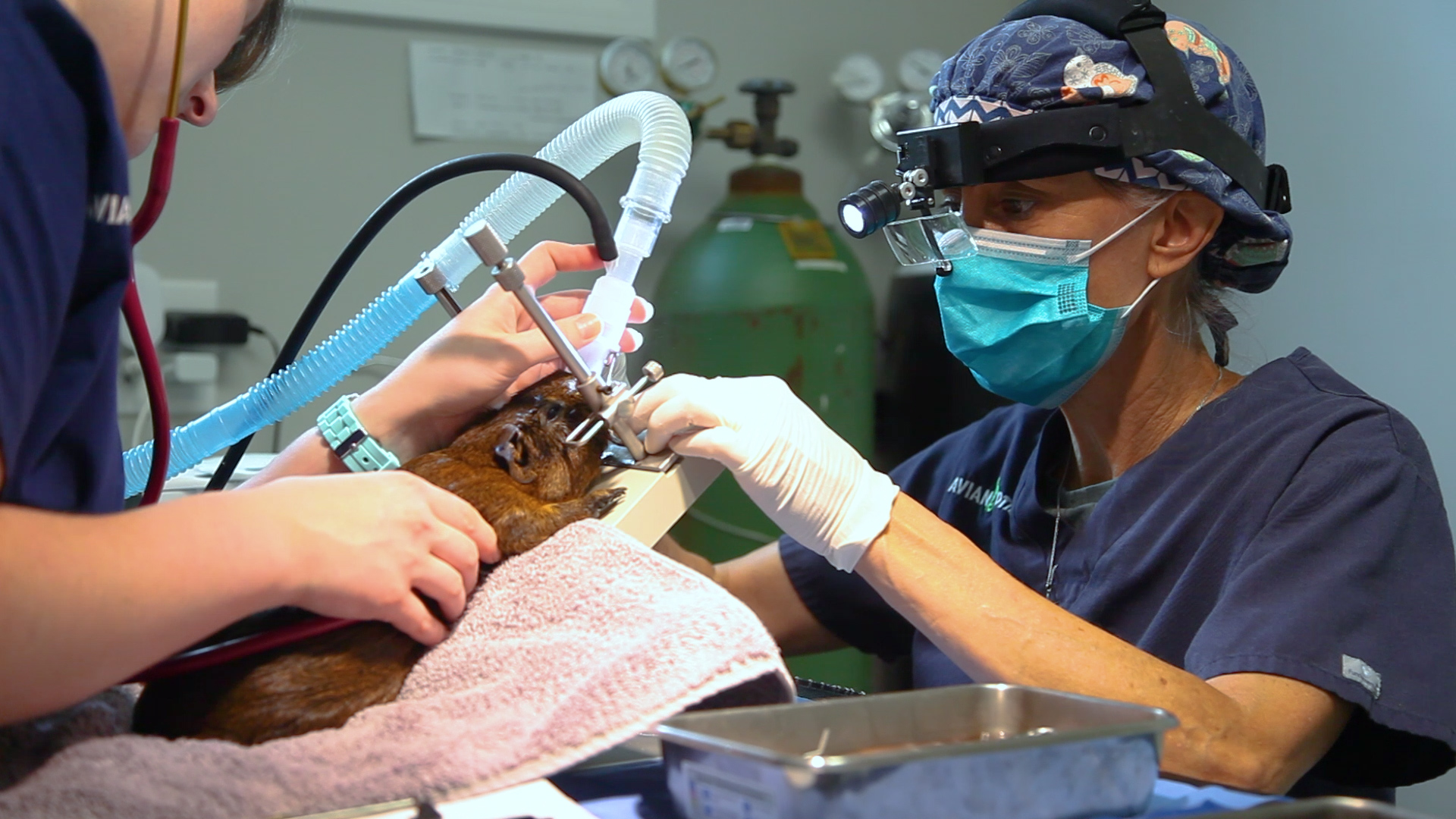 One 2006 study in the UK compared general anesthetic risk for dogs, cats and some exotic species, including rabbits and some birds. The entire document is over 250 pages, so we will summarize here: the overall anesthetic death rate in this study for rabbits (healthy and well) was 1.39%, meaning out of 100 procedures, less than 2 rabbits died during or within 48 hours of anesthesia. It should be noted that when death rates were examined for healthy rabbits alone, the death rate was less than 1%. The rate for guinea pigs was a bit higher than for rabbits, at 3.8%, and ferrets lower at 0.33%. More data for exotic pets is included here:
One 2006 study in the UK compared general anesthetic risk for dogs, cats and some exotic species, including rabbits and some birds. The entire document is over 250 pages, so we will summarize here: the overall anesthetic death rate in this study for rabbits (healthy and well) was 1.39%, meaning out of 100 procedures, less than 2 rabbits died during or within 48 hours of anesthesia. It should be noted that when death rates were examined for healthy rabbits alone, the death rate was less than 1%. The rate for guinea pigs was a bit higher than for rabbits, at 3.8%, and ferrets lower at 0.33%. More data for exotic pets is included here:
Anesthetic death rates calculated within 48 hours of anesthesia. Brodbelt D. The confidential enquiry into perioperative small animal fatalities. Thesis. Royal Veterinary College of London, 2006.
While these rates are relatively low, they are even lower in dogs and cats, and much lower in humans, meaning exotic medicine has much opportunity for improvement. In our 30 years of practice we’ve seen some amazing new techniques and accomplished surgeries we previously would not have thought possible. We look forward to many more great advancements in the years to come.
So How Long Can Cockatiels Live?
Last week one of our favorite friends and clients let us know they lost their wonderful pet cockatiel Popcorn last November. The family moved out of state years ago, but made sure to let us know about Popcorn’s passing. Popcorn was born in 1989, which would make him 29 years old!
His owner Sharon says he survived two Yorkshire terriers, two ferrets, a Dalmatian and a Golden retriever. Congratulations, Popcorn! Your family will miss you.
We generally see cockatiels living into their teens, but older than that is quite unusual!
Popcorn would not be the oldest cockatiel on record, however. The Guinness book of World Records lists “Sunshine”, who was reported to be 32 years old in 2016:
http://www.guinnessworldrecords.com/world-records/oldest-cockatiel/
A CT scan for a snake?
This patient presented for chronic respiratory disease. When diagnostic testing and antibiotics didn't work, additional testing was needed to help find the cause. Here is our patient under anesthesia, positioned with towels and undergoing a CT scan. The results showed a few interesting things that will help us choose the next step to help her.
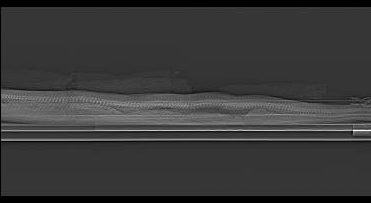
The weather is great! How about exotic pets outdoors?
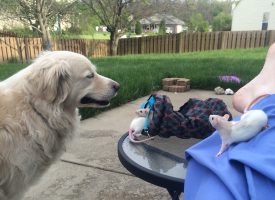 1. Can I keep my pet safe? Is there any risk of predators (neighbor’s dogs/cats, and wildlife, including hawks and owls from overhead)? Is any grass or natural forage the pet may access free of pesticides and other chemicals?
1. Can I keep my pet safe? Is there any risk of predators (neighbor’s dogs/cats, and wildlife, including hawks and owls from overhead)? Is any grass or natural forage the pet may access free of pesticides and other chemicals?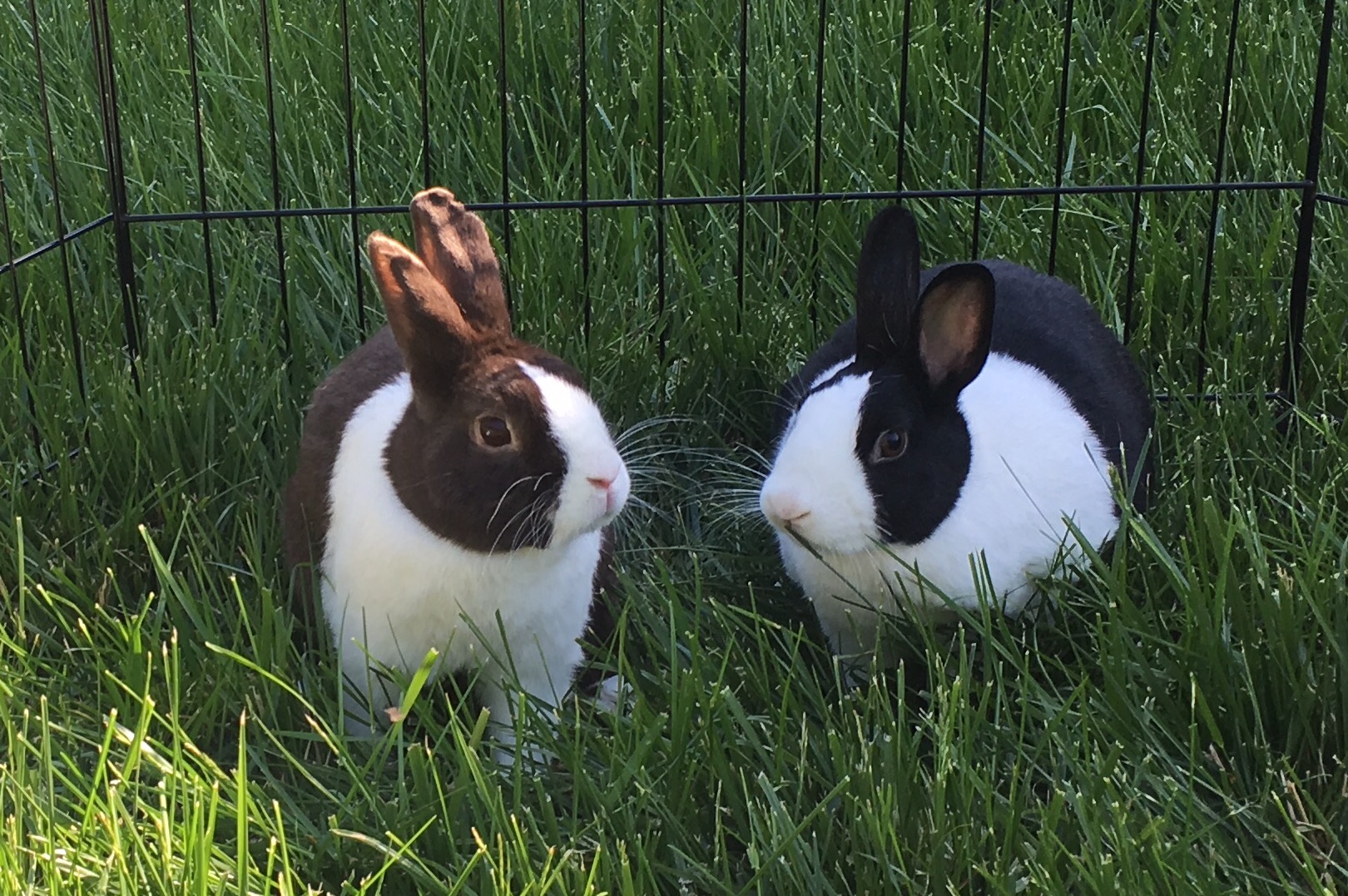 To acclimate a pet to the outdoors, take brief trips outdoors, no more than 10-15 minutes at a time, watching for signs of anxiety of stress. If your pet seems stressed, go back indoors.
To acclimate a pet to the outdoors, take brief trips outdoors, no more than 10-15 minutes at a time, watching for signs of anxiety of stress. If your pet seems stressed, go back indoors.The Top 3 Most Common Diseases Seen on Emergency in Pet Birds
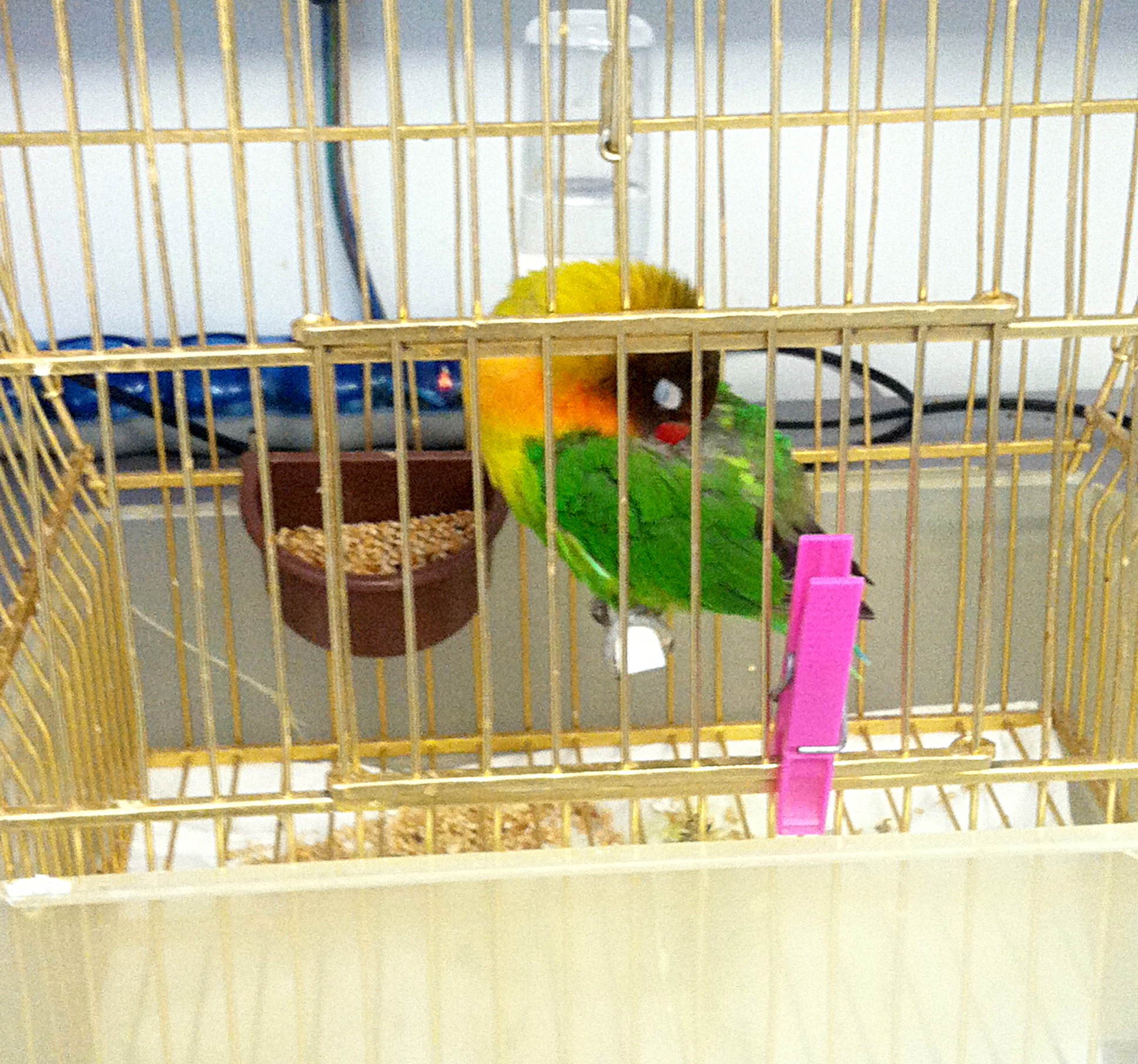
For our second week, we will discuss the pet birds, from finches to larger parrots. There is some evidence parrots were kept as pets over a thousand years ago. “Cookie”, the world’s oldest parrot (a Major Mitchell’s cockatoo) died at the Brookfield Zoo in 2016 at the age of 83.
Want to share in some Ferret Fun next weekend?
 Come join us at the Annual Ferret 500 Saturday May 5th from 9:30 to 5:30 at the Marion County Fairgrounds!
Come join us at the Annual Ferret 500 Saturday May 5th from 9:30 to 5:30 at the Marion County Fairgrounds!Time for a New Series: the Top 3 Most Common Diseases Seen on Emergency in YOUR favorite Exotic Pet!
1. Rabbit Gastrointestinal Syndrome (RGIS):
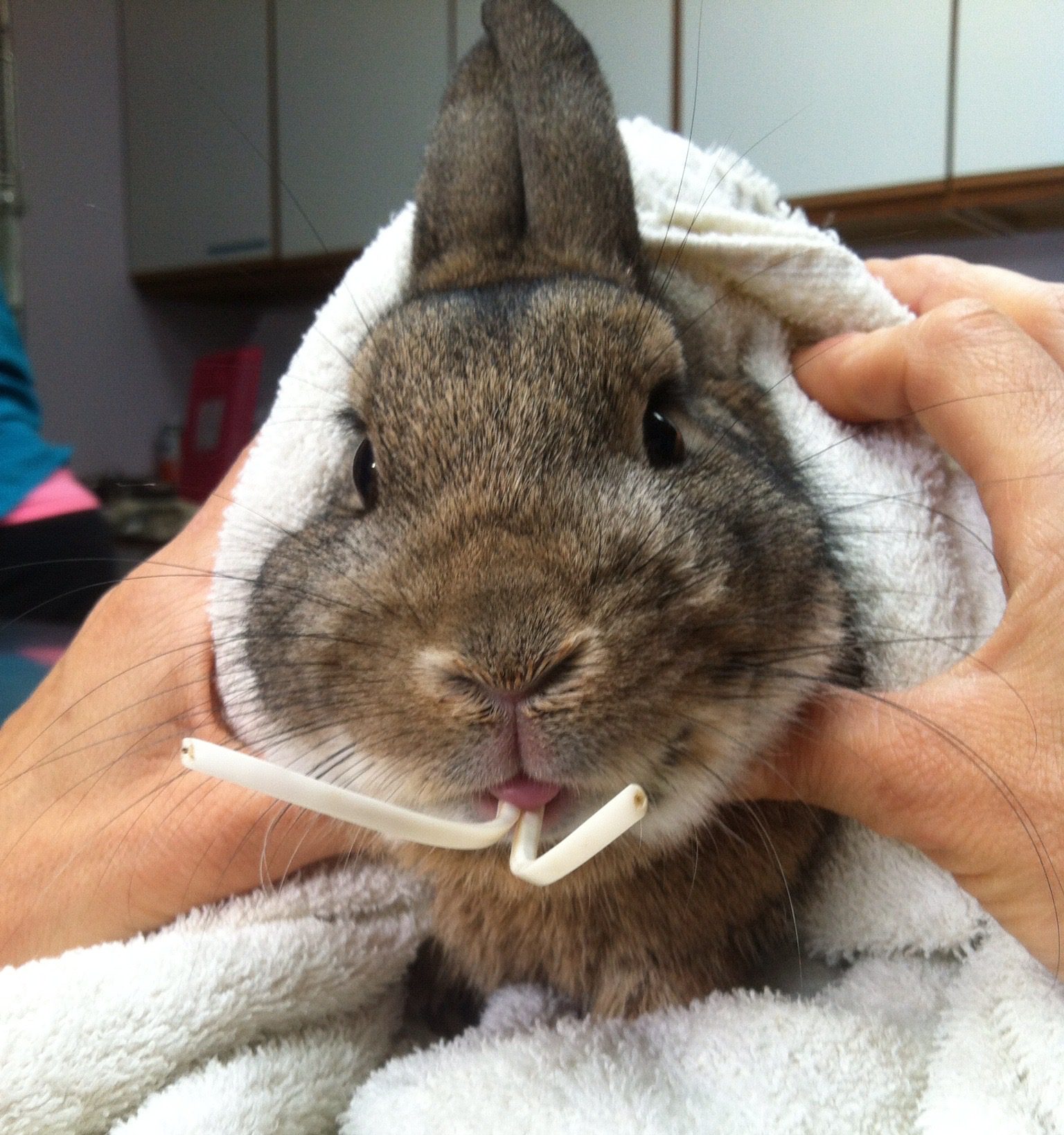 2. Dental Disease
2. Dental Disease
3. Upper Respiratory Disease
Is your new fuzzy baby ferret fully protected from distemper and rabies?
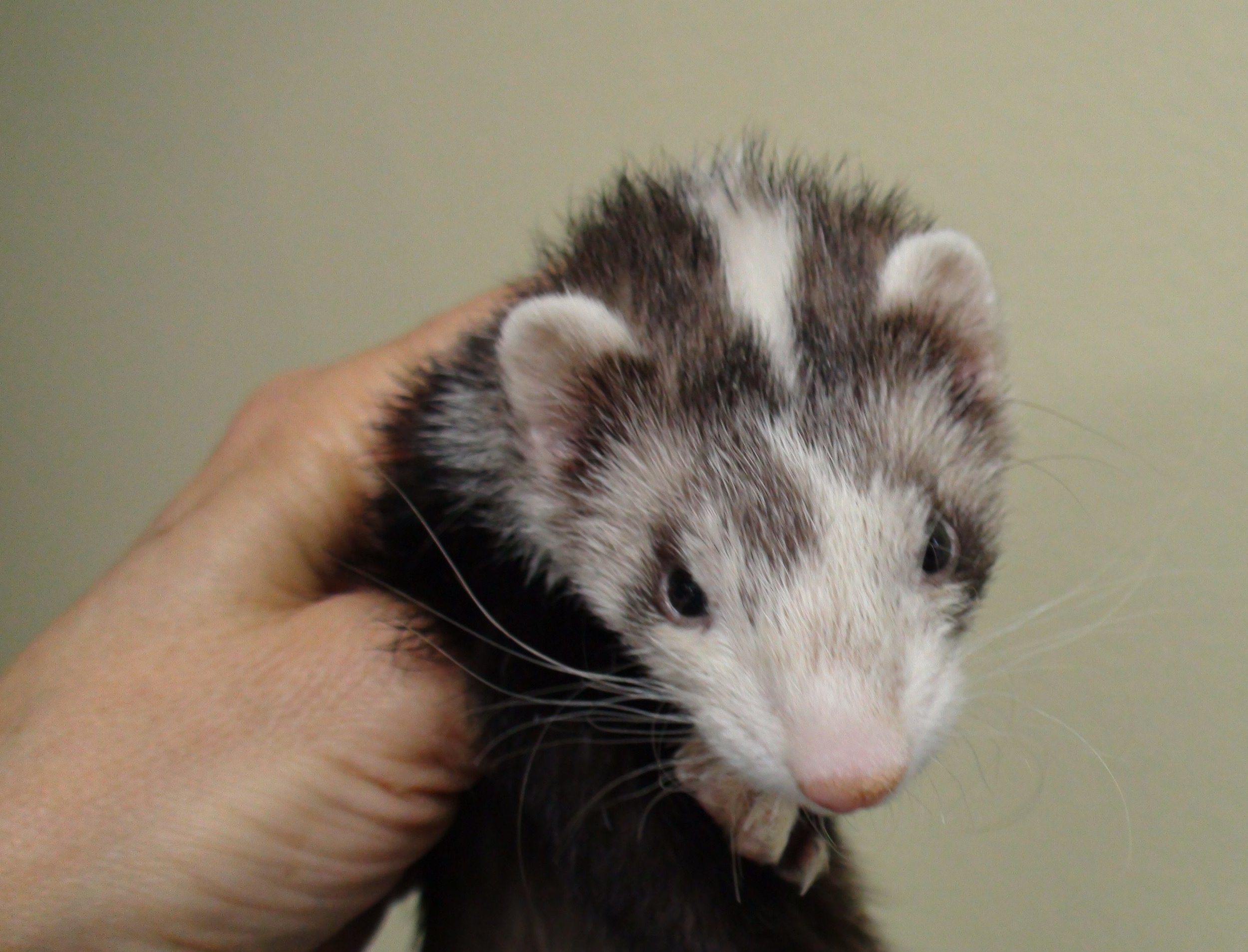 What can be more fun that a silly baby ferret? For those of us with Ferret Fever, don’t forget your new purchase from the pet store is probably not fully vaccinated. Most pet store ferrets come from one or more commercial breeders who usually give baby ferrets the first of the required series of vaccines for distemper. Unless the pet store takes them to the vet for vaccines, the vaccine series is not complete. Also, only veterinarians can administer rabies vaccine, which is required by Indiana law for dogs cats and ferrets. If the pet store says the vaccines are all up to date, ask for proof of vaccination. And if you are not sure, give us a call and we will help you find out if your new baby is really protected.
Don’t forget the Ferret 500 is coming up May 5th! For more information go here: www.theferret500.com
What can be more fun that a silly baby ferret? For those of us with Ferret Fever, don’t forget your new purchase from the pet store is probably not fully vaccinated. Most pet store ferrets come from one or more commercial breeders who usually give baby ferrets the first of the required series of vaccines for distemper. Unless the pet store takes them to the vet for vaccines, the vaccine series is not complete. Also, only veterinarians can administer rabies vaccine, which is required by Indiana law for dogs cats and ferrets. If the pet store says the vaccines are all up to date, ask for proof of vaccination. And if you are not sure, give us a call and we will help you find out if your new baby is really protected.
Don’t forget the Ferret 500 is coming up May 5th! For more information go here: www.theferret500.com


